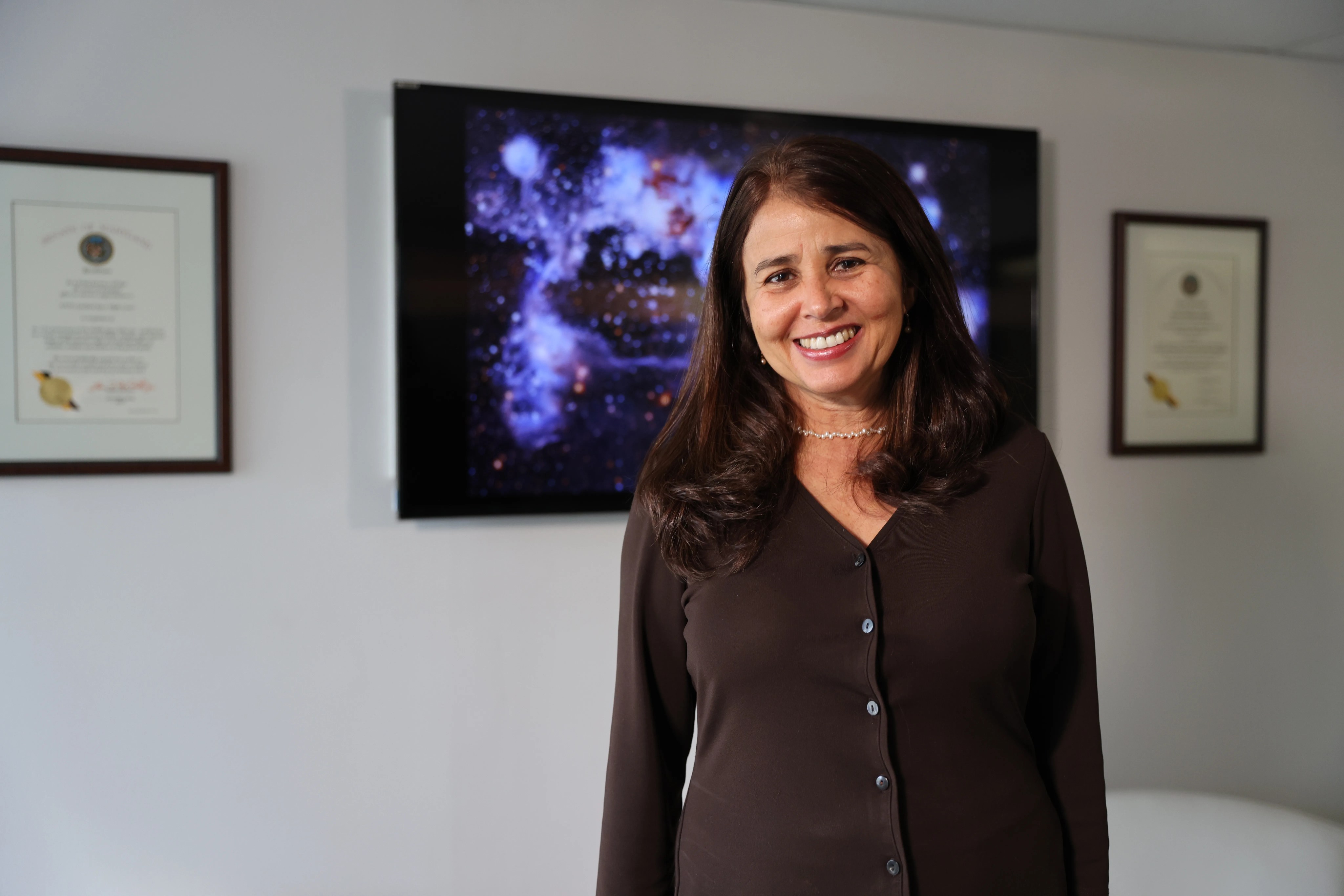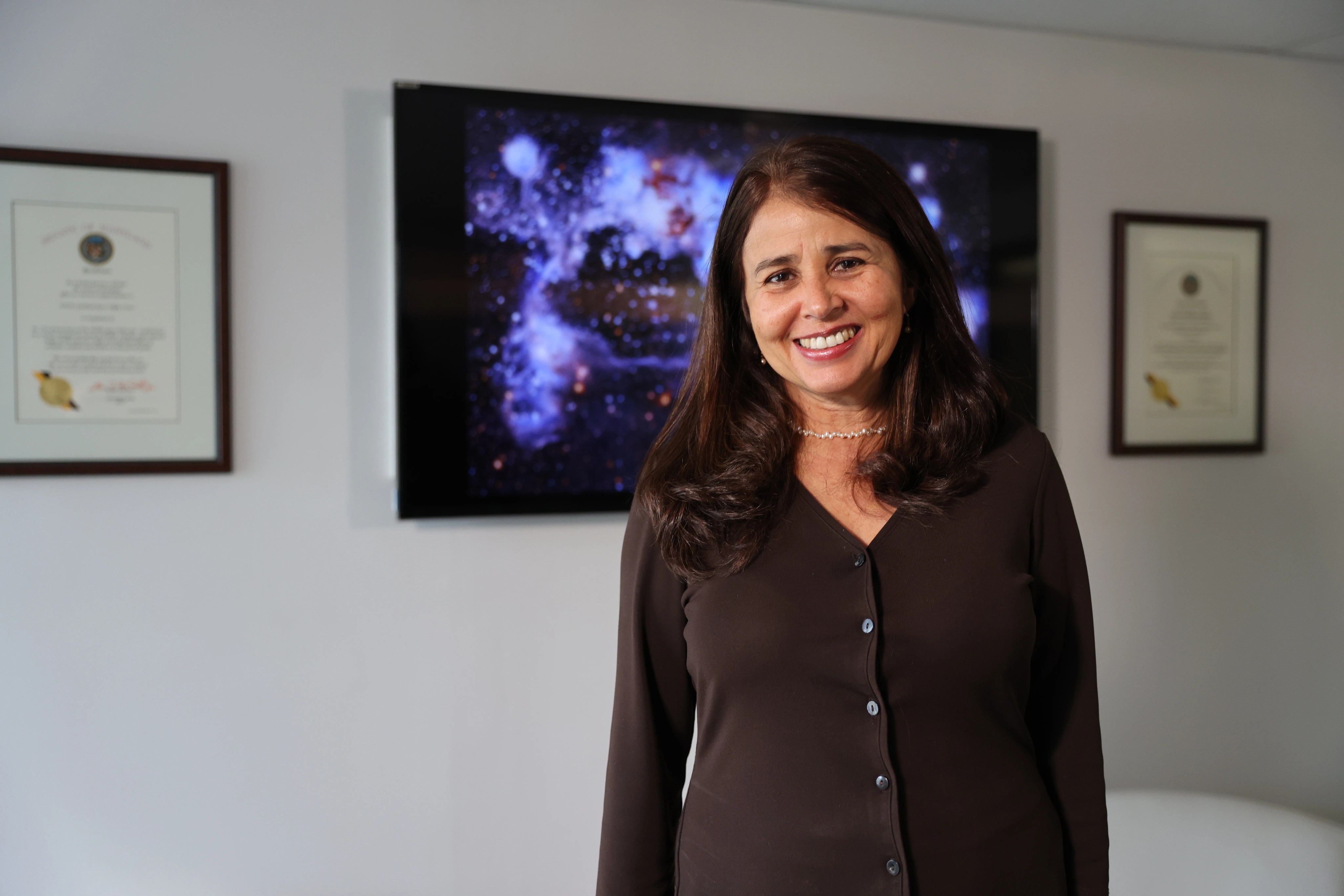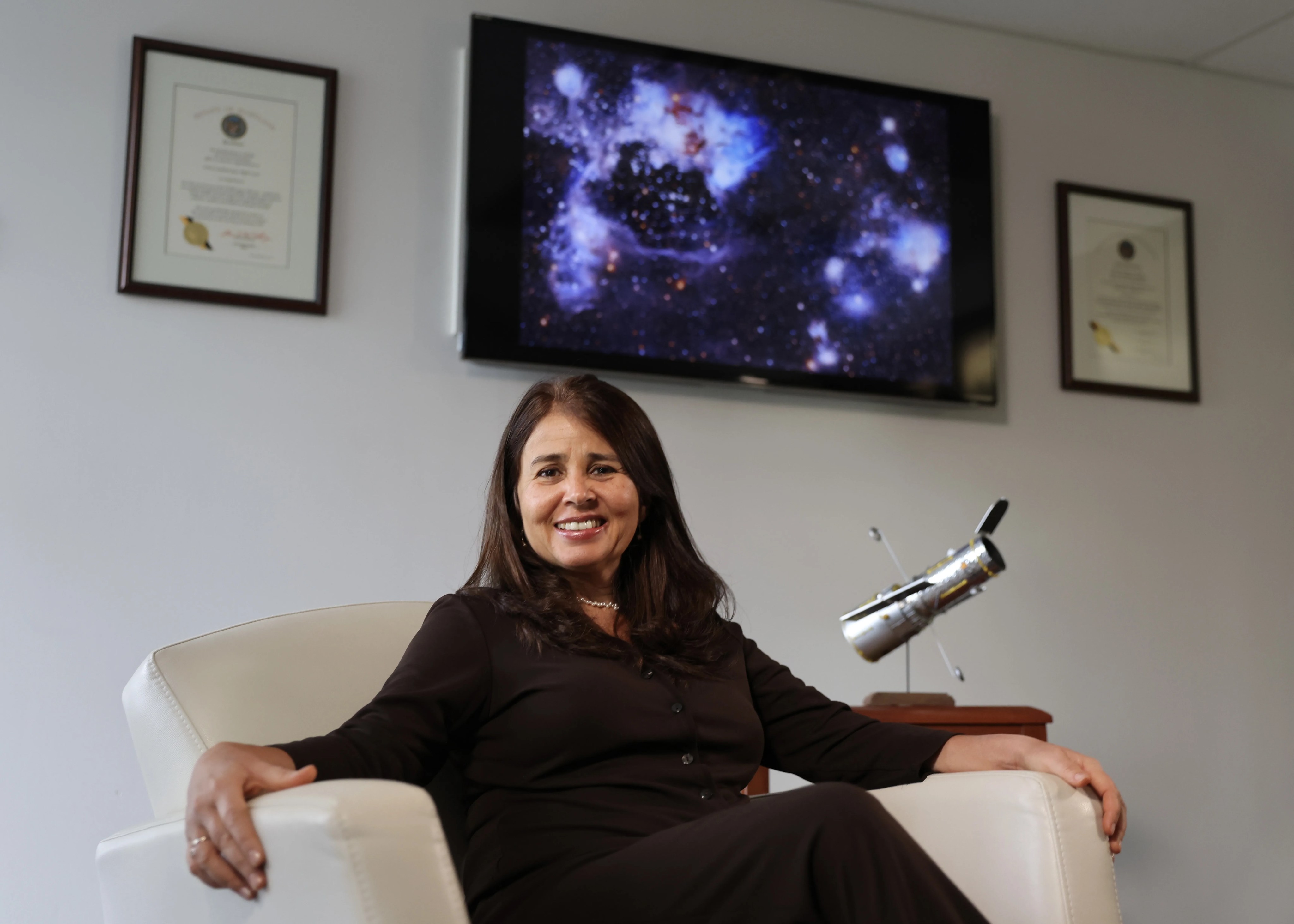
Gladys Kober
Image Processor
Gladys Kober’s love for astronomy blossomed during her childhood in Birigui, Brazil. Her interest in space began at 4 or 5 years old, when she saw a classmate’s drawing of the solar system. I was like, ‘What is that? Nobody told me about this!’ I was fascinated.”
Gladys’ mother tried to answer her daughter’s endless questions about the universe, but finally had to turn to outside sources to support her passion. “She said ‘I already told you everything I knew!’ Gladys recalled. “We would take trips to planetariums and also buy books on space and planets so that I could self-educate.”
Her father, a physician, urged Gladys to follow his footsteps and study medicine in hopes of financial stability. But around high school, Gladys began focusing in on astronomy as a career. She received a bachelor’s degree in astronomy from the Federal University of Rio de Janeiro in Brazil, and later completed a master’s degree in extragalactic astrophysics at the National Observatory in Brazil.
Upon graduating, Gladys began working with a public outreach team at Rio de Janeiro’s planetarium, where she interacted with people of all ages and taught children about astronomy. It was a rewarding experience, but in order to gain job security, Gladys had to apply and take a test to become a civil servant – a government employee that works in public service – at the planetarium. During the time it took for Gladys to be called for a civil servant position, she considered her long-term future.
“I did not see myself living in Rio long term, due to the violence that existed within the city,” Gladys said.
Gladys took a leap of faith. She packed her bags and headed to Chile, where she had previously spent time on vacation, to live abroad while she waited to hear about the civil servant test.
“I backpacked the entire country! From Patagonia, to the desert, I explored it all,” Gladys remembered. At the same time, she worked a temp job as a data analyst, examining both spectra and images for astronomers.
By the time the civil servant position became available, Gladys had decided she could not return to Rio de Janeiro after the safety of Santiago. But she knew she needed to find a better job for the future, since the temp work paid little and came with no benefits. Her father, concerned about the stability of the path she was on, continued to coax her to look elsewhere.
Every object is unique, just like every person is unique.

Gladys Kober
Image Processor
“He urged me to go back to school and find a career that would promote independence – especially financial. After much deliberation, I decided to take my dad’s advice. I told myself that I was still young and had plenty of time to reinvent myself.”
Gladys gave notice to her freelance employer that she would be quitting her job.
“I gave them until the end of the month, and then I’d embark on a new journey of finding something new, but I was nervous about what I was going to pursue,” Gladys said. “Truly, I loved astronomy and could not picture myself doing anything different. It was my passion, and I could not bear throwing it all away.”
But before the month was over, a new opportunity presented itself. Chile’s clear skies draw in many visiting astronomers, one of whom would change the trajectory of Gladys’s career. Working as a data analyst at Catholic University, she struck up a conversation with one of the visiting astronomers in the cafeteria. As they walked back to the same department, the visitor quizzed her about the type of work she had done and her experience. At the end of the conversation, he passed her his business card, noted that he was looking for a data analyst, and asked if she had any interest in going to the United States.
“As soon as I looked down at the card, all I could see was that he worked for NASA! I was in shock and in such disbelief that I later emailed him to follow up and ask if he was serious,” she said.
A week later, an offer letter arrived in her inbox laying out all the details of a salary, the job responsibilities, and a lawyer to contact for a visa.
That fall, Gladys boarded a plane for her first trip to the United States. Washington, D.C. Its autumn leaves greeted Gladys to the area she calls home to this day.
Today Gladys is a data analyst and image processor at NASA’s Goddard Space Flight Center in Greenbelt, Maryland for the Hubble Space Telescope mission. She works with Hubble’s data to support astrophysical research regarding chromospheres, which are gaseous layers in stars’ outer atmospheres.
As an image processor for the Hubble team, she transforms the telescope’s data into stunning images that are both scientifically significant and beautiful to look at. She produces color composites of Hubble images that are shared in press releases, news stories, and on Hubble’s social media.
“It is a delightful task that involves both science and art,” she said.
Outside of NASA, Gladys is an adjunct professor at Montgomery College in Rockville, Maryland, where she teaches Astronomy 101 to non-science majors.
In 2005, she was honored with a NASA Peer Award for her work on deciphering the ultraviolet absorption spectrum of the unstable star Eta Carinae, which involved identifying and analyzing thousands of spectral absorption lines. Spectra are observations made by separating the light from a cosmic object into colors. By analyzing those colors astronomers can gather information about an object’s characteristics.
Gladys loves to highlight what she sees as the natural beauty of the universe, translating science into art through Hubble images.
“Every object is unique, just like every person is unique,” she said.

